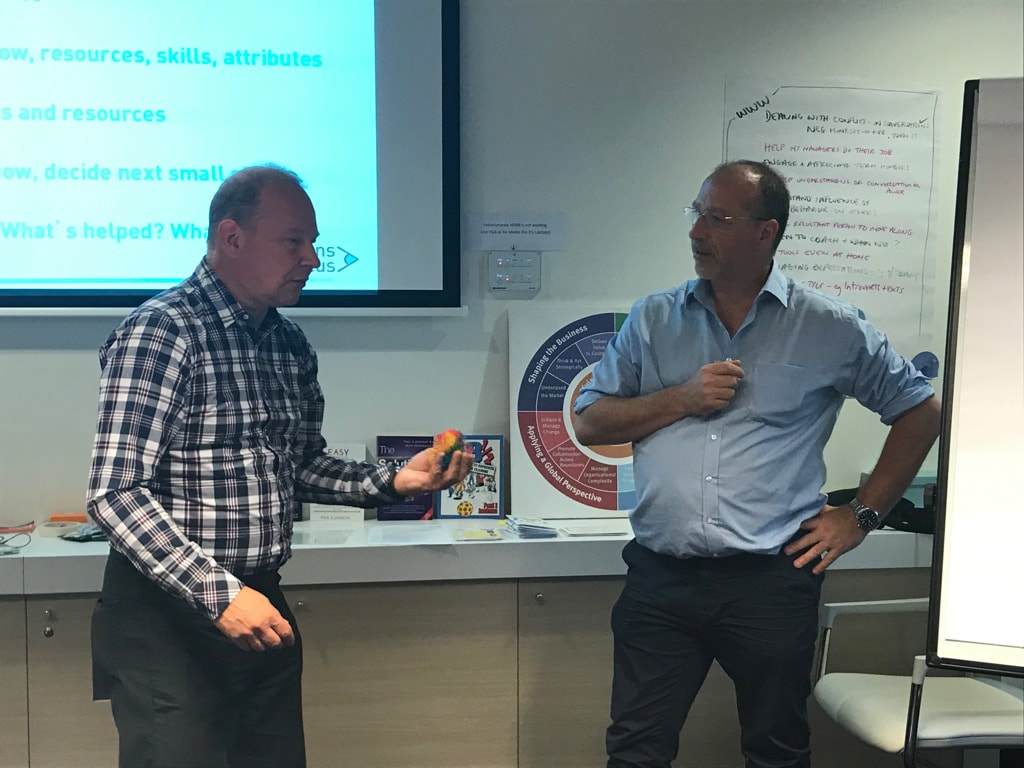We are running one of our favourite Solutions Focus training activities during a coaching programme. Nine leaders from a multi-national company are working out what they would say if they were in a follow-up coaching session and their client said nothing was better.
It’s a fun activity because it stretches the leaders, encouraging them to be creative. If one of the main topics of a coaching session is what’s better since the previous session, then how do they get their coachees to talk about that, if their first question – ‘What’s better?’ – gets the dreaded ‘Nothing’ response?
They see the pitfall. If they ask, ‘Why is nothing better?’, they are inviting the client to run through excuses and complain about others, not to mention go on the defensive if they feel the leader had expected them to have made progress.
And so our participants come up with some great ideas. One suggests simply waiting – it’s the coachee’s turn to speak if the leader waits long enough, and so they’ll eventually come up with something that has gone better. Another recommends overlooking the ‘nothing’ and switching the conversation to a reminder of what the coachee wanted to achieve, and to check how it’s going with that project – inevitably they are some distance along that track.
This is our second day of an ambitious programme with a new client in Amsterdam. Our participants are a senior group, including a few from HR, travelling in from around Europe. Most know each other reasonably well. And it’s clear from the start that they love getting into the discussions about the solutions-focused approach and how it might help them with their organisational issues.
As with many managers, they tend to be a bit quick at jumping to conclusions. No matter how tricky the topic, they have that managerial tendency to know what the other person should do with their problem. As coaches, they’ll need to hold off for a least a few minutes, in case their coachee comes up with an idea (maybe a better one, certainly one they are more likely to be willing to own and act on).
They are getting a sense of how a coaching style can build capacity in their colleagues, encouraging them to work out their own solutions, taking a load off of the leaders’ backs. They sense the value of enlivening the resourcefulness of their staff. And by the end of the two-day training, they’ll be ready to apply this very pragmatic set of tools to the projects that they’ll select for themselves to test out these ideas.
We’ll meet them again for the second phase in about three weeks. And now we know what to do if they say ’Nothing’ when we ask them what progress they’ve made, although we are expecting to hear many tales of progress as they incorporate SF into their daily conversations and projects.

